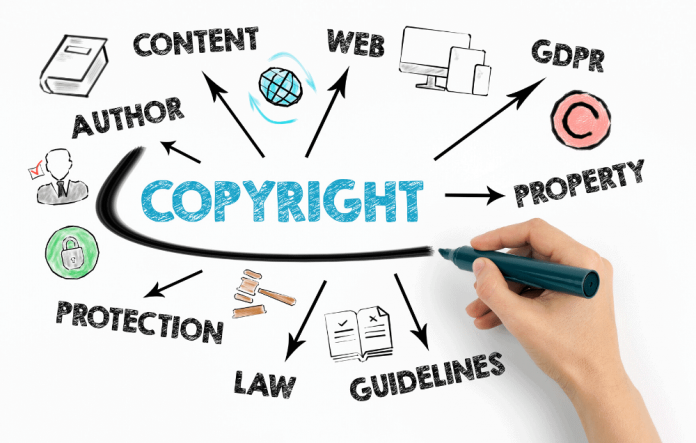This article has been written by Deepak Nayak, pursuing a Diploma in Intellectual Property, Media and Entertainment Laws from LawSikho.
Table of Contents
Introduction
Copyright infringement and resulting termination are statutorily defined in both India and the US. Like other legal rights, copyright too is not absolute but is subject to limits and exceptions. The legal framework of copyright does not absolutely prohibit the use of a copyrighted work, but, in fact, allows a person to use a copyrighted work under certain exceptions. One such exception is “fair use.” The term fair use, although undefined under both US and Indian copyright law, has its spirit captured in legislation, with the judicially derived factors being listed under 17 USC 107 and Section 52 of the Copyright Act of 1957, rendering “certain acts not amounting to infringement.” To avoid misuse of copyrighted works for personal gain the law has granted the provision to terminate the copyright that was previously licensed/assigned.
Copyrighted works are statutorily protected in all the countries where the Copyright Act helps the owner of the works to exploit them the way he/she intends to commercially or otherwise. It is statutorily defined regarding the process of initiation till termination but is subject to limits and exceptions under ‘Fair Use.’ Examples of fair use in United States copyright law include news reporting, research, scholarship, commentary, search engines, criticism, and parody. Under section 17 USC 107 of the Copyright Act of 1976, there is a provision to terminate if there is a misuse from the party to whom the copyright owner has licensed/assigned his copyrighted work. Let’s have a glance at the few main legal regulations of the section that deal with Termination – Section 17 US Code 203 – Termination of transfers and licenses.
Conditions for termination
If there is a work besides work made for hire, the exclusive and nonexclusive authorisation for transfer or license of that copyright or any of the right under copyright, exercised by the artist/author on or after January 1, 1978, is/are subject to closure/termination under below conditions:
- If the author/artist is dead then the person who is entitled to exercise more than 50% of that author/artist’s termination interest.
- Where artist/author is dead and his or her termination interest is owned by relevant parties, it may be exercised as mentioned below:
- The widow or widower and surviving children or grandchildren of the author. The ownership of more than 50% of the author/artist’s interest is divided among them and only when the majority of authors/right holders are interested.
- The author/artist’s manager/trustee will also own the author/artist’s entire termination interest.
- Termination could be initiated at any time during the intended period of five years starting at the end of 35 years from the date of starting of the grant.
- The termination can be initiated by issuing an advance notice in writing duly signed by the owners/majority of termination interest.
- The notice will mention the effective date of the termination, which will be within the five-year period and the notice shall be issued not less than 2 or more than 10 years before that given date. A copy of the notice will also be sent to the Copyright Office.
- Termination can be initiated with an agreement to make a will or to make or create any future grant.
Result of termination
After the effective date of termination, all rights covered come back to the author, artists, and other persons owning the termination rights under clauses (1) and (2) of the subsection. The termination rights holders can make a further agreement/grant. Such a new agreement/grant is effective only if it is made post the mentioned date of the termination. 
US Copyright Termination Rights : a case study
As per termination rights mentioned in the Copyright Act of 1976, it offered artists/authors the possibility to get back rights to previously licensed compositions/works after thirty-five years. This termination right is designed to authorize creators to negotiate favourably against the terms of the publishing deals that they signed before the actual value of their work/deal was known. The termination right, which is codified as 17 USC 203, is applicable to rights assigned from January 1, 1978, on one condition that they are not made for hire.
Court interpretations of these regulations : a case study extract
Case of Victor Willis who was a lead singer of the band, Village People during the 1970s. The court decided that Mr. Willis has the right to get back the copyright license of thirty-three songs that he co-wrote. All those works were created after January 1, 1978, the Act gives protection that is the lifetime duration the author lived and fifty years plus. It also gives authors or artists the right to terminate the grant of copyright once it is made even after 35 years.
The court sees that Mr. Willis had granted his copyright-related interests in all the thirty-three songs separately and also from his or co-artists and hence under the 1976 Copyright Act 17 U S C 203 he had the right to independently terminate his grants to the publisher/producer.
The court further mentioned that, upon termination, Mr. Willis will get back what he transferred to the publisher when he was not in a position to bargain his rights, despite the terms of the Willis Grants that were made previously. It also made sure if there was anyone apart from Mr. Willis then he would still get a 50 percent interest in it.
The “authorship” issue in this case which is associated with the clash about who co-wrote the lyrics of the 33 songs with Mr. Willis remains with no exact proof. The writing credits when the song was published had established multiple persons as Writer along with Mr. Willis when he had no real bargaining power. He argues that one of the listed writers/authors did not even contribute to the creation of the compositions/lyrics. He mentioned that he and his friend Mr. Morali were the only writers of many of the Willis Grant compositions. Hence, he should acquire 50% of the monetary gains/copyrights from them.
It is in favour of Mr. Willis and he will acquire –
1) 50% copyright of the whole or;
2) 33% copyright interest in the 33 songs if previous co-authorship claims from the publisher and credits of a third purported writer are proved in the court of law.
The work-for-hire defence was used by the publishers, but later withdrawn and this is one of the important aspects. The US Supreme Court notified assessing whether work was – made for hire – under the US Copyright Act. They include how much power the hiring party had the right to exercise or to control and the tax part and also if any alternative projects can be assigned to the author/artists. Any of these factors were not in favour of the publishers in the Willis case.
The prevalent challenges : steps to overcome
- The author is the authentic owner of the Section 203 termination right.
- If the work is jointly authored, the majority action is required to execute the termination action.
- Section 203 applies to grants of transfer/license of copyright or any right under copyright either exclusive or non-exclusive and also the author must be living when the grant is made and it must be on or after January 1, 1978.
- Section 203 of the Copyright Act does not apply to Works done for Hire and grants made by the author in his/her will or by the author’s successors. It does not apply to derivative works prepared before the termination continue to be used under terms of the original grant.
- Termination of the grant takes effect anytime during a 5-year window starting 35 years from the grant date when it was initiated and if the grant covers the publication of the work anytime during that 5 year period.
- One can terminate the grant and for that before serving the notice, we must make a thorough investigation on who is the current owner of the rights and who can initiate the termination rights legally and one must serve notice on the grantee or grantee’s successor as per the agreement. It can also be done either by handing over the notice personally or by mail sent to the address which is verified as the last known address of the party for whom the notice is being sent.
- Requirements for the notice of termination. In order to be effective, it must be notified to the grantee in Writing and mention that the termination is being made under Section 203 of Copyright Act and it must be signed by the author or the majority owners of the termination interest and must be duly signed above that person’s full name and address. It must also state the intended date of termination which must fall with the intended 5 year period. Mention the date of execution and identify the publication date and mention the name of each person whose rights are being terminated and also mention every recipient’s addresses to which the termination notices are being sent. The termination notice will be ineffective if it did not identify the author/s, title, and the registration number of the copyright for each work to which the notice of termination applies. It must also be informed by notice in the Copyright Office before the actual date of termination.
- The notice mentions all names and their relationships with respect to the deceased author and all of spouse and children and if the spouse and children are dead or alive because if the author dies, the successors of the deceased author will be considered as relevant grantee. The notice must specifically mention which grantee/successor has more than half of the author’s termination interest.
- The notice exercised by the successors or grantee of the deceased may include a brief explanation of the people signing the notice and it has been signed by all the people whose signature is required to exercise the termination interest.
All these clauses are meant to protect the right of the author/artist who may not have the bargaining right while signing the deal and to protect his/her work and provide them with the authority to exercise copyright powers to lease/rent their work for a favourable agreement. However in order to exercise the termination of the copyright the work must not be ‘work made on hire’/’employee basis work.’
In Order to make the copyrighted work internationally valid, nations have become members of the international conventions on copyright. For example, if there is copyright infringement of United Stated Copyrighted work in India, then still statutory actions can be taken if India is part of that International Conventions. As of now, India is a member of the following international conventions on copyright:
- Universal Copyright Convention.
- Berne Convention for the Protection of Literary and Artistic Works.
- International Copyright Order, 1991
- Trade-Related Aspects of Intellectual Property Rights (TRIPS) Agreement.
- Convention for the Protection of Producers of Phonograms against Unauthorised Duplication of their Phonograms.
- Multilateral Convention for the Avoidance of Double Taxation of Copyright Royalties.
So if a copyright owner from the United States needs to file a claim to a third party or terminate the license handed over previously here in India, he/she must check if India is a member of an International Copyright Convention so that further legal process can be initiated.
Conclusion
To conclude in general, all aspects starting from Initiating the Copyright till the Termination, the processes involved, and many regulations are country-specific. However, the emergence of International Copyright Conventions are forming over a period of time to cover the gap, there is still too much space for the development of the Unilateral Copyright Law under a single international convention which is sustainable for both copyright owners and users/clients and is valid internationally with same legal laws and formats and this helps in executing less complex laws and saves time for the government as well as the corporates.
References
- https://fairuse.stanford.edu/law/us-code/u-s-copyright-act/copyright-ownership-and-transfer/
- https://www.copyright.gov/title17/92chap2.html#203
- https://www.law.cornell.edu/uscode/text/17/203
- https://www.nytimes.com/2013/09/11/arts/music/a-copyright-victory-35-years-later.html
- https://www.indiafilings.com/learn/international-copyright-registration/
Students of LawSikho courses regularly produce writing assignments and work on practical exercises as a part of their coursework and develop themselves in real-life practical skills.
LawSikho has created a telegram group for exchanging legal knowledge, referrals, and various opportunities. You can click on this link and join:
 Serato DJ Crack 2025Serato DJ PRO Crack
Serato DJ Crack 2025Serato DJ PRO Crack










 Allow notifications
Allow notifications



